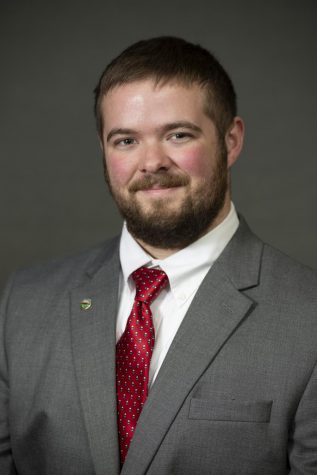Increasing tuition costs at Washburn draws student concern
July 10, 2019
While many Washburn students are currently enjoying their summer with days at the pool, going on vacation and spending time with friends or family, they are also preparing for the upcoming school semester.
With classes already chosen for the fall, many students are simply waiting until August for the next semester to begin and for the inevitable late night study sessions to resume. However, many are also keeping a tight watch on the cost of their classes and the semester overall as the prices of college often force many to take out loans or seek jobs during the summer break.
Returning students will be disappointed to hear that the cost of tuition has gone up since last semester, following an unsettling trend. On June 26, the Washburn Board of Regents approved the University’s budget for the 2019/2020 fiscal year which begins on July 1. The newly approved budget will raise tuition by 2.7 percent for Washburn students, 2.5 percent for Washburn tech and 1 percent for Washburn Law students. For students at Washburn, this means that the set price of 292 dollars per credit hour has changed to 300 dollars and that the usual price of 158 dollars per credit hour at Washburn tech has risen to 163 dollars.
This increase in tuition was chosen by the board so that they could approve a new salary program for staff and teachers, including a 2 percent general salary increase and an additional half percent reserved for market adjustments.
A statement released by President Farley reveals that this decision did not come easily.
“The regents had a difficult decision to make and we appreciate their thoughtful approach and deliberation. They were very cognizant of the fact that the majority of the Kansas Board of Regents (KBOR) schools agreed to not increase their in-state tuition – though many increased some of their fees. The board is always concerned with keeping a Washburn education affordable and agrees to tuition increases only when the case for them is very clear.”
President Farley went on to say that the board came to their decision as Washburn had fallen behind peer institutions in terms of faculty and compensation. The board recognized that Washburn had fallen 13 percent behind the benchmark institution and needed to catch up with staff salaries.
The board’s decision means that the cost of an education at Washburn will only continue to rise, forcing more students to pick up more hours at their job(s) while also taking out more loans. The increase was only marginal but students can most likely expect the cost to continue to rise as time goes on.
Washburn and its board of regents must balance the budget in order to break even on costs for the fiscal year and acquire more revenue from their sources of income. Washburn draws its funds from donations, students, sales tax and state funding. With donations being a variable source of income and with sales tax decreasing in the Shawnee area, Washburn must rely on state funding or students in order to pay for everything from building repairs to teacher salaries.
Recent state funding for universities in Kansas has increased under the Kelly administration; on April 4 earlier this year, state lawmakers approved the governor’s plan for approving $90 million for schools in Kansas. This is a huge boon to educators and universities in Kansas, but while schools such as KU, Emporia State and Wichita State received over a million dollars in funding individually, Washburn received only a little more than $500,000 from the state.
This amount of funding is relatively small when compared to the amounts that the other universities in Kansas are receiving. But, because Washburn is a municipal university, it has to rely more on its students as a source of revenue than state funding. As Washburn is not part of the KBOR it has a great deal more independence in its decision making abilities but at the cost of more pressure on the students, and with the number of prospective students coming to our university dropping, it is only making the funding situation worse.
Jim Martin, Professor of business at Washburn, explained that the declining population of high school graduates is having an adverse effect on revenue generated for the university.
“When you look at the demographics, high school grads, if those shrink or grow slowly, then it will be extremely important for us to control cost. More people will lead to more credit hours and more revenue generated for the school,” Mr. Martin said. “In years when demographics have been increasing with high school grads and growing populations, all universities benefit from that. Kansas is not in a growth spurt right now. There have been no big increases in population or from high school grad classes for a while now.”
Students at Washburn will need to continue to keep a sharp eye on the cost of tuition and seek out other means of income to help cover the costs such as scholarships or loans where possible. As with others around the U.S., students will need to make the decision of whether an education is worth the cost and, if so, how will they afford such an increasingly high price.
Edited by Adam White, Joelle Conway




